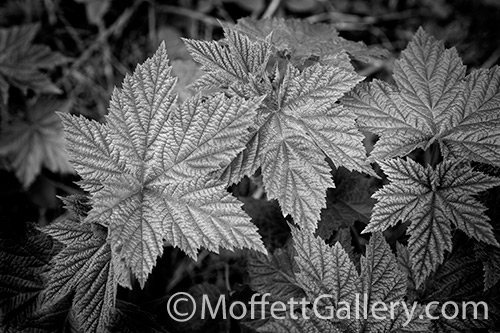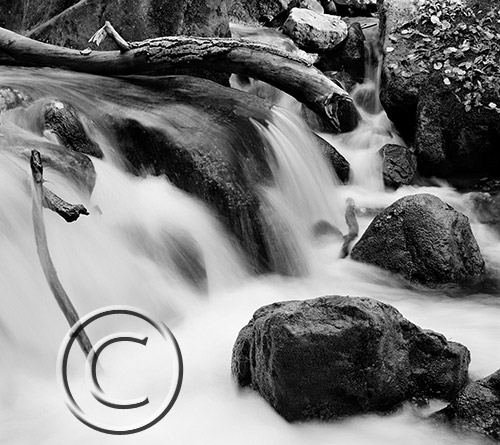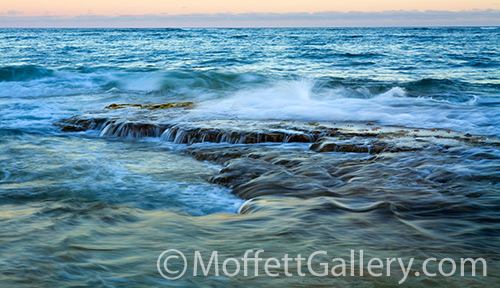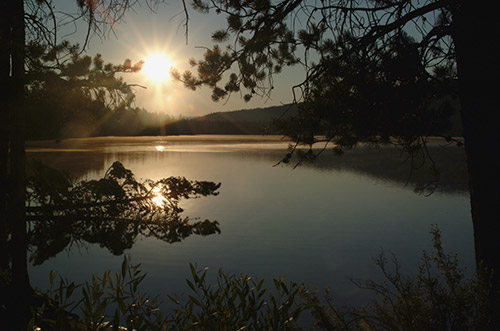by tmoffett | May 26, 2010 | Black and White, Landscape, Photo tips, Photographic Philosophy

Silver Beauty
It amazes me how many times I hear students say, “I can’t find anything to shoot.” Developing a vision and then becoming aware and truly observant of our surroundings are skills that every successful photographer must have. It takes time and practice to develop these skills. Many mistakes will be made along the way, but from every mistake we can learn, and by learning we become better. The only way to develop your own vision is to get out and make photographs. Often. Daily, or at least weekly whenever possible.
Evaluating your images is the second step to developing vision. Self-evaluation is good, but critiques from mentors and peers is even more effective. We must learn to accept constructive criticism and grow from it in order to reach our potential. We become so involved in our own work that often we fail to see our shortcomings. Even to this day I seek out critiques from my associates. I want to know how my photographs make them feel. What would they do differently?
Silver Beauty is a result of all of the above. I was on a school outing with one of my boys, and I got up early, stepped outside the cabin and found this scene. Just a small leaf, but the light falling on it was wonderful. After making the original print, I asked several of my photographer friends what they thought. I considered their feedback, made a couple of changes and then watched the print go loan at Professional Photographers of America annual print competition.
by tmoffett | May 25, 2010 | Black and White, Landscape, Photo tips

High Creek
Yesterday, as I was writing, I got to thinking about photographs I have made in the past with water. The image posted today, High Creek, is one of my earliest successful photographs of water motion. I guess I have been drawn to water for quite some time, but recently I have become more aware of how much it interests me. I have spent a lot of time on a personal project of documenting Lake Lowell, and I guess that that is one of the reasons I have become more aware and fascinated with the characteristics of water.
I don’t thinks I am alone in this fascination, either. It seems that many of my students love water as well. I am asked over and over how to capture the smooth, silky images of flowing water. The principle is very simple. Use a tripod and shoot with a slow shutter speed. This leads to a perfect assignment for a beginning class, as it forces the students to practice the principle of equivalent exposure. They can see immediately the difference between using a long shutter speed and small aperture and using a short shutter speed with a wide open aperture. Once equivalent exposure is mastered, it seems to open up a whole new world of creativity to beginning photographers.
by tmoffett | May 24, 2010 | Color, Landscape, Photographic Philosophy

Ocean Waves
Water. Power. Beauty. The motion of water, captured in a still image is a beautiful thing. The past few months have been intrigued with water-land interactions. This image was shot while on a vacation in Kauai in January. We were walking along the beach just outside of our hotel one evening and came upon this reef just offshore. I watched the waves for quite some time, mesmerized by the motion created as they crashed into the reef and washed over the top and flowed softly back into the ocean. I could see the beauty and feel the power of the ocean current.
A photograph, a piece of art is about feeling. Yes, it must be technically executed to near perfection, but without feeling it is only a pretty picture. I want my images to allow the viewer the privilege of feeling what I feel when I am photographing. Ideally I want more than one of the senses involved. With this photograph, can’t you almost feel the mist on your face, smell the ocean breeze, want to reach out and touch the water? What do you feel when strolling along the beach? If a stirs an emotion within you, then it is a successful image.
by tmoffett | May 21, 2010 | Color, Landscape

Stanley Lake Sunrise
Stanley Lake is a favorite destination for our family camping trips. The scenery is beautiful and the fishing not bad. I love both, and it just happens that the best time of day for fishing and photography is the same. Needless to say, I struggle with this. Do I take camera or fly rod? Most mornings the camera wins out.
by tmoffett | May 20, 2010 | Black and White, Landscape, Photo tips, Photographic Philosophy

Fallen
I love black and white photographs. I grew up as a photographer shooting almost exclusively black and white film. I loved the darkroom. the smell of the developers and fixer. I think that developing and printing my own work for years has made me a better photographer. I learned to see how the camera sees. I learned to make correct exposures. If I did make a mistake my darkroom work was much more difficult. I also had to make decisions on paper types, warm or cold toned, contrasty or flat, and many others. Experimentation cost money. In a nutshell, I learned to pre-visualize the end result at the time of exposure. With the advent of digital photography, I find this is becoming a lost art. It is too easy to try everything before the final print is made.
Even though I am now shooting mostly digital, I still practice pre-visualization. At the time of exposure I already know what the finished image will look like. I can then make the correct exposure to maximize quality and minimize post-production work. This image, Fallen, is an example of this process. Color was never an option. The warm toned image also portrays the feeling of life better here than a cool toned image would. This is what I saw when I shot. A warm, inviting image with good tonal separation between the moss covered trees and the heavy undergrowth. A calming feeling of peace. When looking at this image I can almost smell the fresh, moist air. It’s almost as if I were there.







Recent Comments